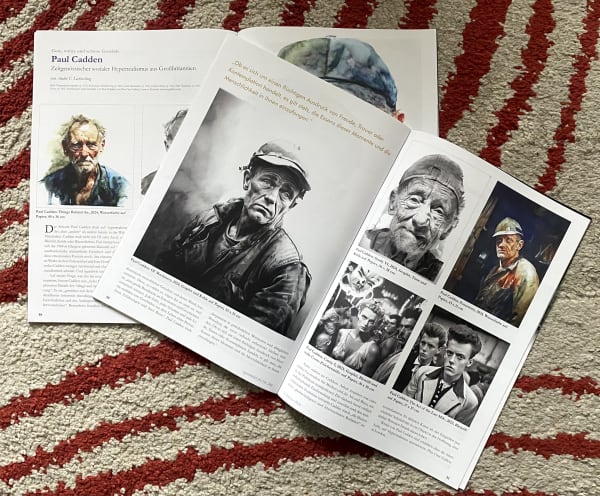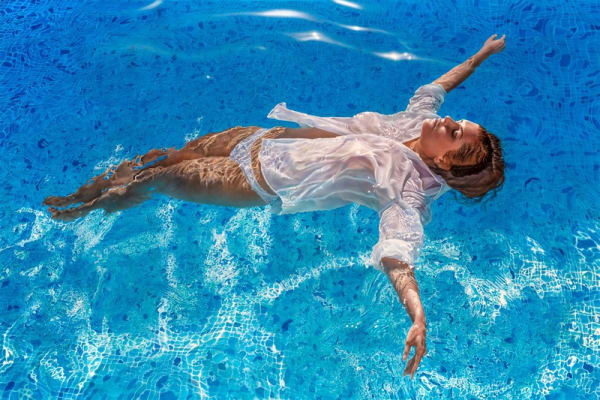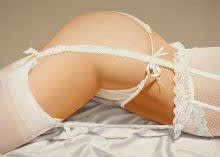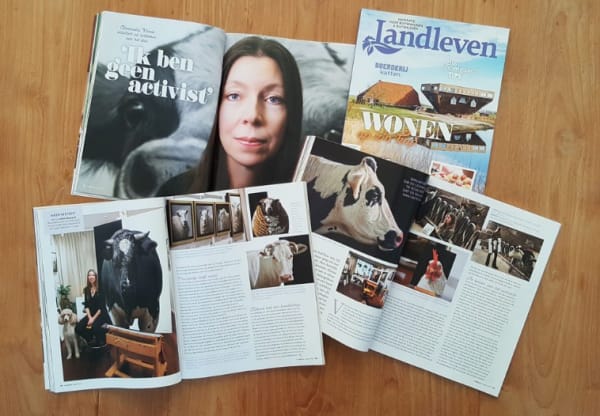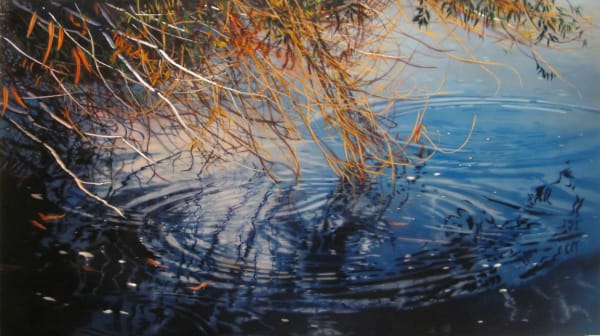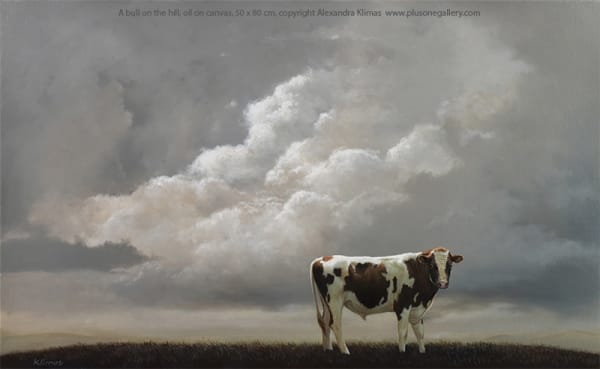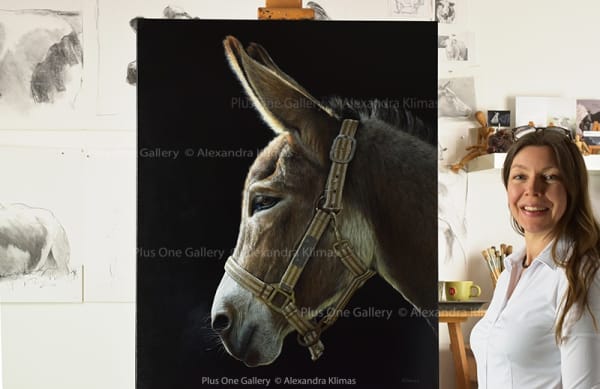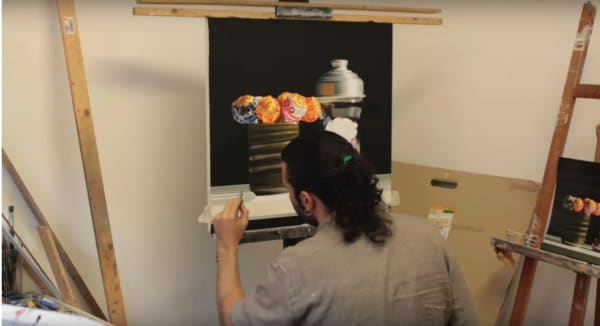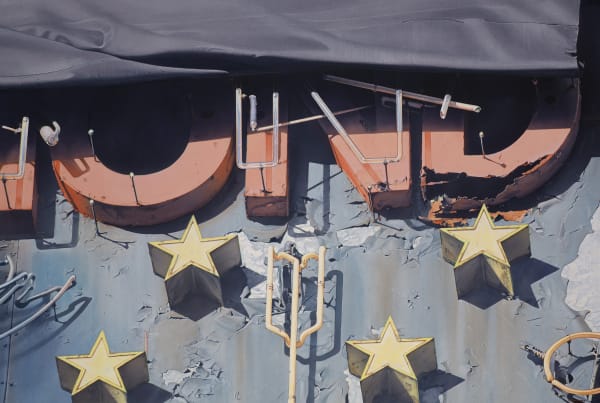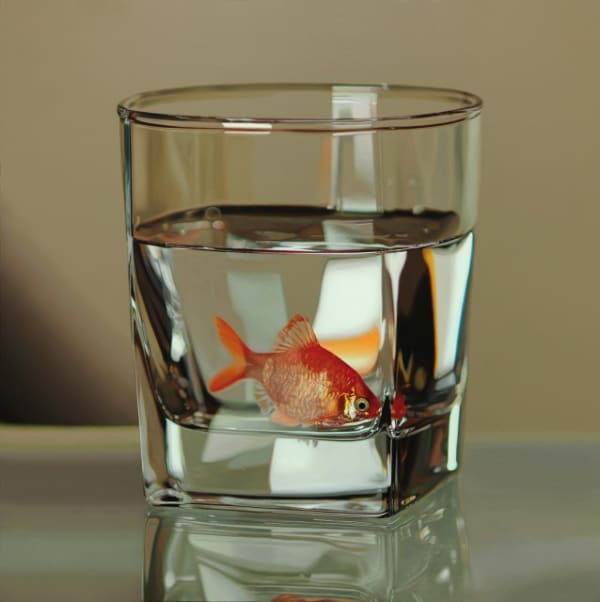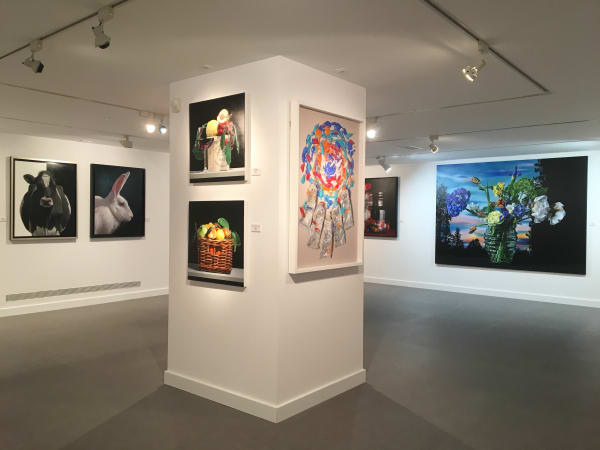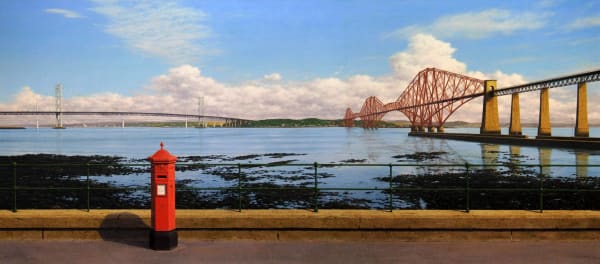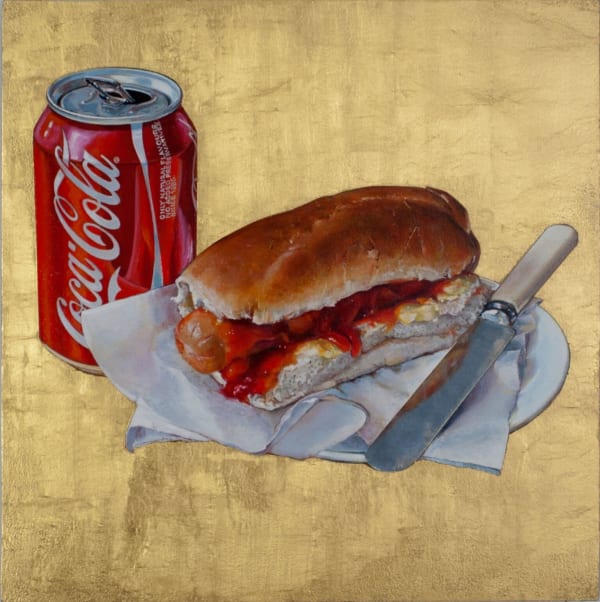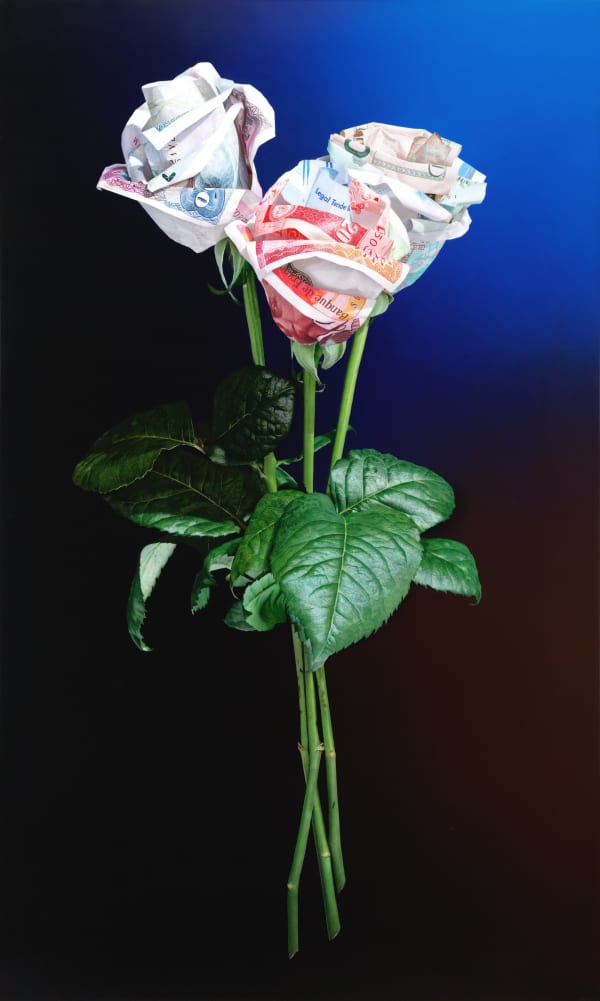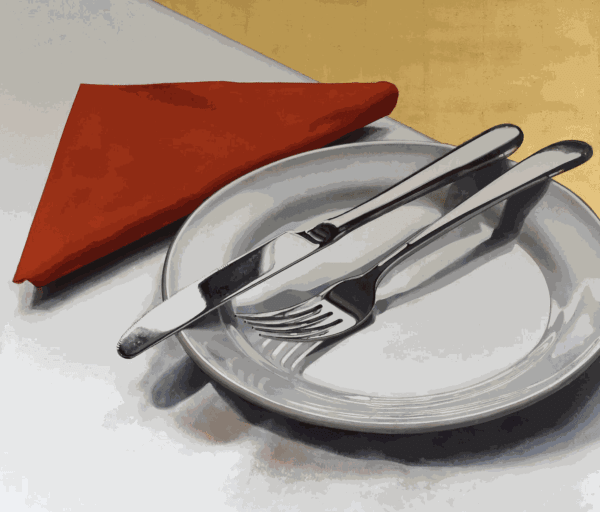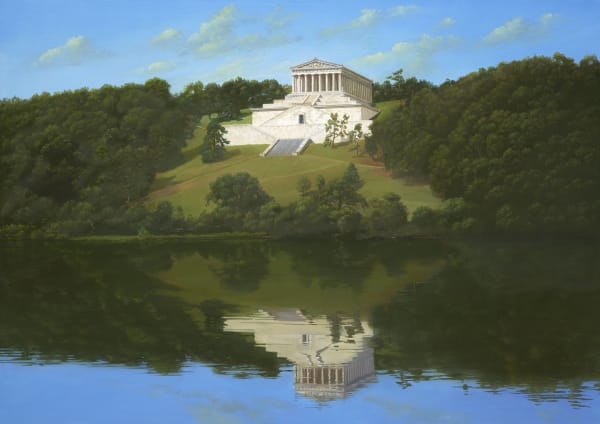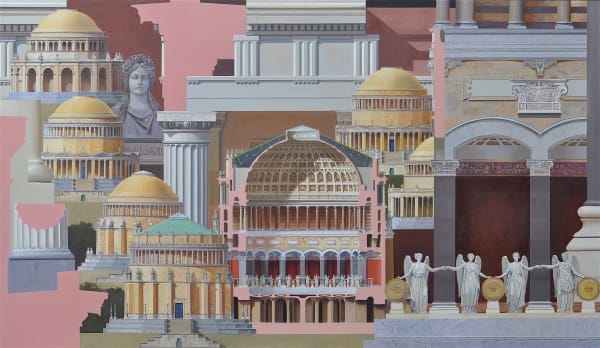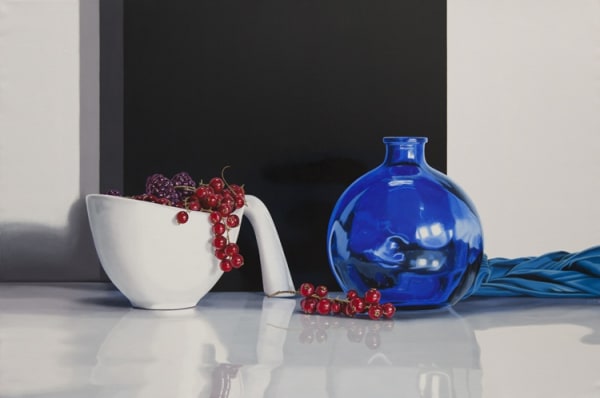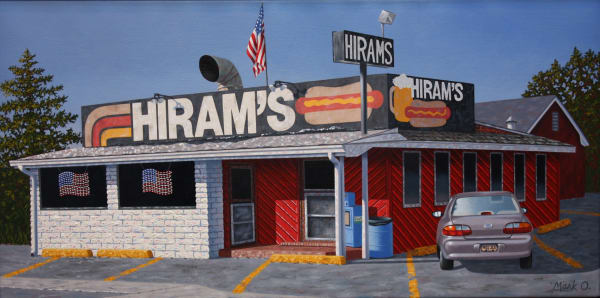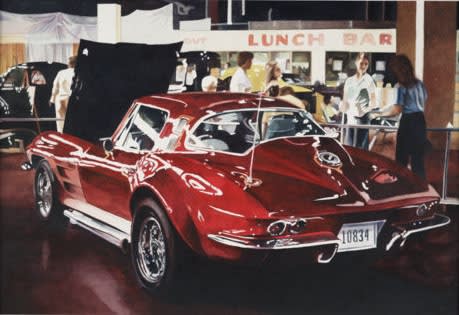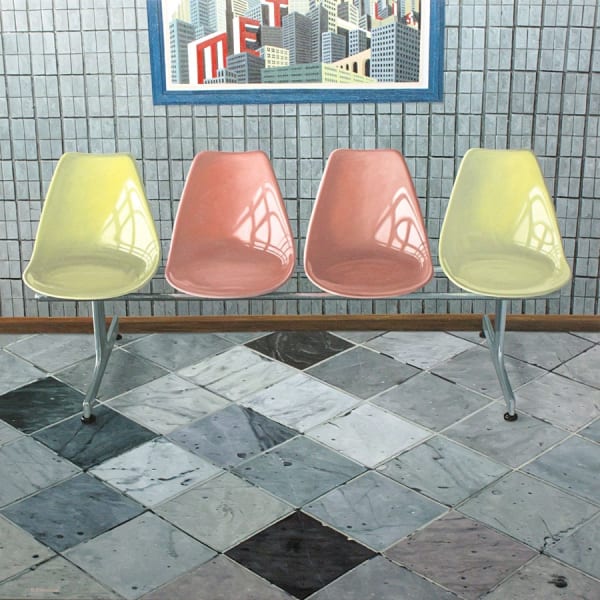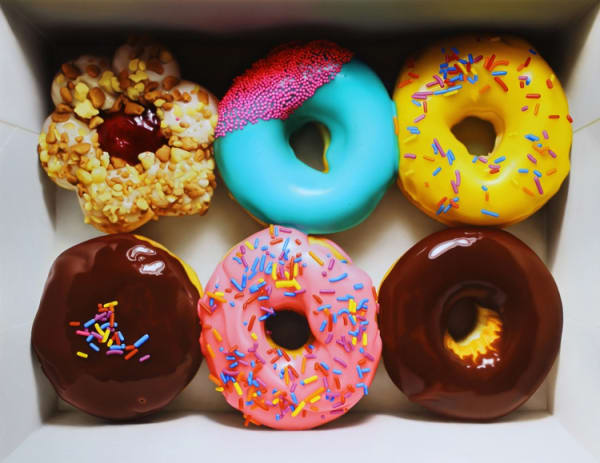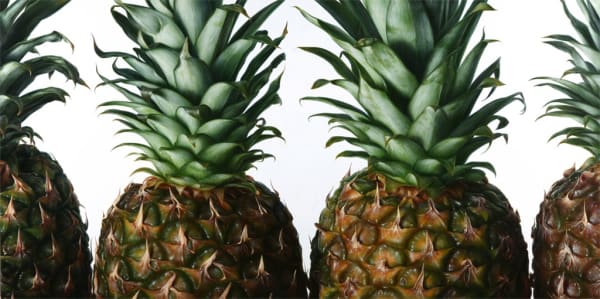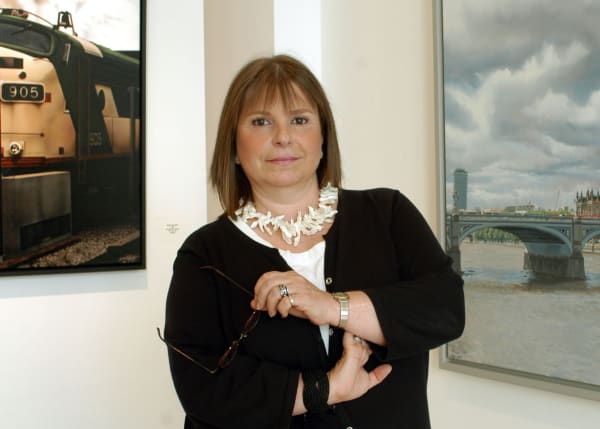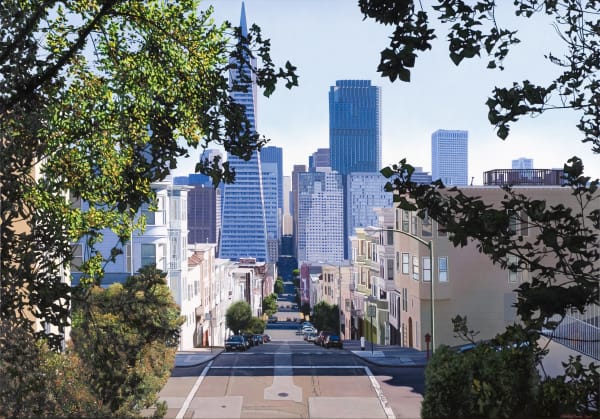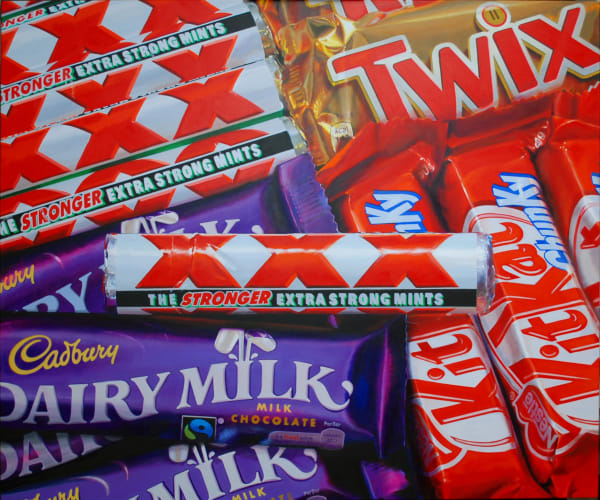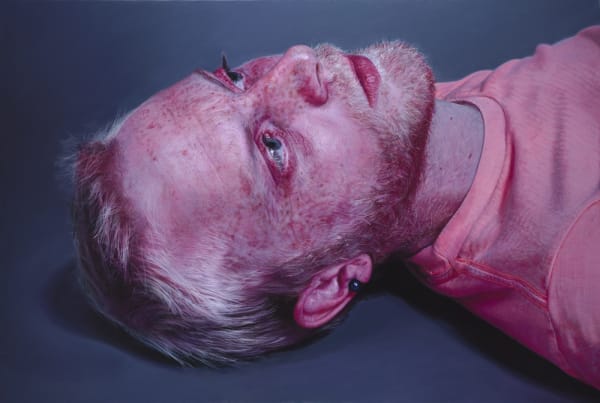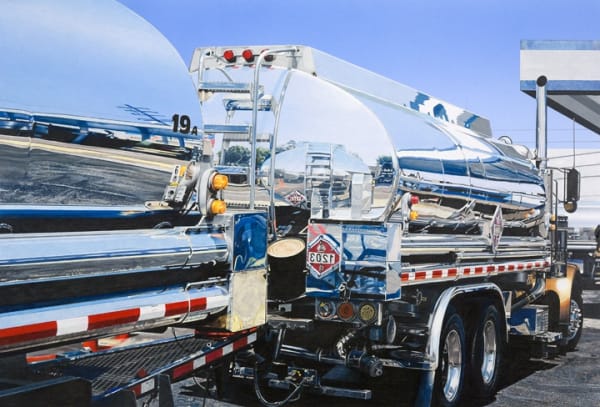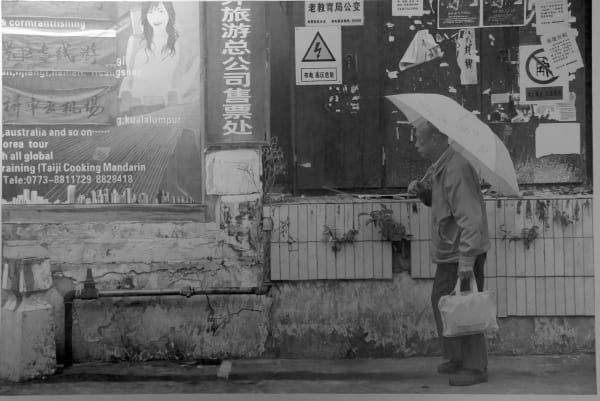(English translation Magazine Landleven)

Alexandra Klimas paints in tribute to the animal
"I'm not an activist"
Her grandfather owned three red furs. He didn't hug them, but he treated them with respect. With the same reverence, Alexandra Klimas paints cows in oil. To portray them as personality. Her main mission is to create a bond between the buyer of the painting and the animal. In tribute to all Marleentjes and other cows, sheep and chickens that eventually end up on the plate. Because an animal is more than a piece of meat, she says, as one of the world's best cow painters.
For painter Alexandra Klimas it is not 'a' cow: "They are all their own characters. I soon start painting the eyes, which reflect the soul, and with them you feel the connection. The fact that the fur looks a bit different from reality is less important, it's about the essence, the animal itself, that's what I try to get out." She goes out in the area to sketch or capture the animals in photos, before starting an oil painting in her studio in Leerbroek. No exotic or crazy breeds, but ordinary cows and sheep.
"It is relaxing to sit between the cows or the sheep, it makes you very zen. But I do it mainly to observe. First they are naturally curious and then they go about their daily business again and you see the most beautiful moments, how they are among themselves, whether there is peace in the group, and you can see the character traits a bit. One animal appeals to me more than the other. At the organic farm De Groene Geer there is a cow that is more mother than the rest, she looks after all calves so well, which is special, because not every cow has the ambition to be a mother all the time, or there is one that watches out from a primal instinct when the rest are ruminating, with their eyes half closed, enjoying the sun. There are cows that are more playful, more curious or rather reserved. External characteristics are not that important to me at all, the character determines whether and how I want to paint an animal. As an artist I can add a spot, that is not a problem. It's important, because it doesn't change the cow's being." Alexandra looks at dog Bella in the living room: "Look, if my dog has a few spots or not, I don't care. It doesn't matter to the dog, it doesn't matter to me, as long as she has a great character. Between the puppies she looked to see which way the cat jumps and I immediately thought: that will be my puppy."

The madness of the ear tag
However aesthetic her work may be, the animal behind it is everything. "When I was twelve, thirteen, fourteen, I was against fur and animal testing for the make-up industry. I was involved in that, with animal suffering, not with art. As a small farmer, my grandfather was always concerned with his animals. He taught me the beauty of nature and the value of an animal, despite the fact that a pig was slaughtered every year. He treated his animals with respect as long as they were alive. That is still my example. When he had to move to a smaller house, he placed advertisements for the last three cows and every farmer who responded, he looked up to find out if the animals ended up well and didn't go straight to the abattoir, not that he hugged his cows and in the living room let go, but so was my grandfather."
"I am no longer an activist, but I think that we no longer treat animals well. Everyone should know for themselves whether they eat meat, I respect that, because it is not my message not to eat meat. We should be more aware of what we are doing and that it should be improved. Look at the transport in trucks over long distances and the way in which that is done, I disapprove that. But also that a small butcher is no longer allowed to slaughter his own cow, because of all the rules, from a hygienic point of view. No one looks at the importance of the animal, because it is precisely in large companies that do it 'according to the rules' that so much goes wrong. At the small butcher it went a lot better." With the same thought - what is in the animal's interest - she omits the ear tags of the cows on the canvas. "I dislike brands, chipping and such, I strongly oppose that. It is madness. Imagine a farmer selling a calf that is not registered; everything revolves around control. The animal gets a number, but the animal is not a number."
Marleentje lives on
“I want to paint them as they were, as they are, as I met them. So alive. As a kind of tribute to their involuntary death for us humans. They didn't sign for it. If you choose to do that, you have to give them a good life. If I can convey that realization... The special thing is that the people who hang a cow painting on the wall, develop a bond with such a cow and therefore deal with meat more consciously. It is the cow that constantly looks at you in the living room. That's what my work does. That is why my mission is to paint so lifelike that that bond can arise. People then send an email saying: 'Marleentje is still doing well, but we want a painting next to it, to give her company'. After six years, the real Marleentje may no longer be alive, but she still lives on. When my mission succeeds, I'm happy, unlike when they just say: 'It goes well with the couch."
Buying her painting is not yet directly linked to the adoption of the real Marleentje. "I'm not naive, because if you look at how many cows are slaughtered per year, it's nice for Marleentje to go to a rest home, but it doesn't solve anything. I don't see it as saving a cow. Feeling for that one cow, that's not what it's about, it's about a collective awareness about animal welfare, that people don't just see a piece of meat." Sheep, rabbits, chickens, the same applies to all farm animals. It bothers her that society looks away from animal suffering. Stopping the factory farming here and then getting the meat, eggs or wool from abroad won't solve anything. "Everything we don't like has to go, what doesn't suit us has to go, but that's so superficial." The solution is more respect for the animal.

Always with a message
She once painted wild animals and children, each time with a message. "Poaching, child trafficking. Everything that is vulnerable is abused. When I came to live here in the village, I thought, you can be busy with the whole world, but you better start a little smaller." That 'small' are the farm animals in its own environment. The cows of De Groene Geer in Nieuwland regularly serve as models for Alexandra. The cows she remembered best? "My grandfather's, with whom I was allowed to help with milking and feeding. I still remember what they looked like and how I felt about them. No, it is striking, but I have never painted them. However it all started with those red furs. Of course I am grateful that people buy my work, but I also think it is important that my paintings get a good home. It sounds strange, but I think it is important that they take good care of my cows or sheep, and until now that has always happened.”
"I wanted to show this lady's vulnerability, her almost tender, sweet character, despite having those horns. I had the feeling that her horns were facing inwards as if she didn't want to harm anyone with them."
To book an appointment or for more information please contact us via email on maggie@plusonegallery.com and maria@plusonegallery.com
or by phone on 020 7730 7656.
or by phone on 020 7730 7656.


